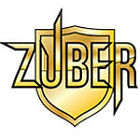Picture 1 of 1

Picture 1 of 1

Fundamental Concepts in the Design of Experiments by Charles R. Hicks (1994, Hardcover)

ZUBER (261739)
97.9% positive Feedback
Price:
US $20.95
Approximately£15.73
+ $14.15 postage
Returns:
30 days return. Buyer pays for return postage. If you use an eBay delivery label, it will be deducted from your refund amount.
Condition:
FUNDAMENTAL CONCEPTS IN THE DESIGN OF EXPERIMENTS By Charles R. Hicks - Hardcover **Mint Condition**.
Oops! Looks like we're having trouble connecting to our server.
Refresh your browser window to try again.
About this product
Product Identifiers
PublisherOxford University Press, Incorporated
ISBN-10003097710X
ISBN-139780030977107
eBay Product ID (ePID)7038207937
Product Key Features
Number of Pages68 Pages
LanguageEnglish
Publication NameFundamental concepts in the Design of Experiments
Publication Year1994
SubjectEngineering (General), Experiments & Projects
TypeTextbook
Subject AreaTechnology & Engineering, Science
AuthorCharles R. Hicks
FormatHardcover
Dimensions
Item Height1 in
Item Weight30.7 Oz
Item Length9.6 in
Item Width6.5 in
Additional Product Features
Edition Number4
Intended AudienceCollege Audience
Dewey Edition21
IllustratedYes
Dewey Decimal001.4/34
Table Of Content1. The Experiment, the Design, and the Analysis2. Review of Statistical Interference3. Single-Factor Experiments with No Restrictions on Randomization4. Single-Factor Experiments - Randomized Block and Latin Square Designs5. Factorial Experiments6. Fixed, Random, and Mixed Models7. Nested and Nested-Factorial Experiments8. Experiments of Two or More Factors - Restrictions on Randomization9. 2f Factorial Experiments10. 3f Factorial Experiments11. Factorial Experiment - Split-Plot Design12. Factorial Experiment - Confounding in Blocks13. Fractional Replication14. Taguchi Approach to the Design of Experiments15. Regression16. Miscellaneous TopicsSummary and Special ProblemsGlossary of TermsReferencesStatistical TablesAnswers to Odd-Numbered ProblemsIndex
SynopsisThis brief, yet comprehensive text covers the essentials of experimental design used by applied researchers in solving problems in the field. It is appropriate for a variety of experimental methods courses found in engineering and statistics departments. Students learn to use applied statistics for planning, running, and analyzing an experiment. The text includes 350+ problems taken from the author's actual industrial consulting experiences to give students valuable practice with real data and problem solving. The use of the computer is promoted and SAS (Statistical Analysis System) computer programs are incorporated to facilitate analysis. Coverage of the analysis of residuals, the concepts of resolution in fractional replications, the Plackett-Burman designs, and Taguchi techniques is new to this edition., This brief, yet comprehensive text covers the essentials of experimental design used by applied researchers in solving problems in the field. It is appropriate for a variety of experimental methods courses found in engineering and statistics departments. Students learn to use applied statistics for planning, running, and analyzing an experiment. The text includes 350+ problems taken from the author's actual industrial consulting experiences to give students valuable practice with real data and problem solving. The use of the computer is promoted and SAS (Statistical Analysis System) computer programs are incorporated to facilitate analysis. Coverage of the analysis of residuals, the concepts of resolution in fractional replications, the Plackett-Burman designs, and Taguchi techniques isnew to this edition.
All listings for this product
item 3 Fundamental Concepts in the Design of Experiments by Hicks, Charles R.
£5.79
+ £13.17 postage
item 4 Fundamental Concepts in the Design of Experiments by Hicks, Charles R.
£6.96
+ £13.17 postage
Be the first to write a review





















